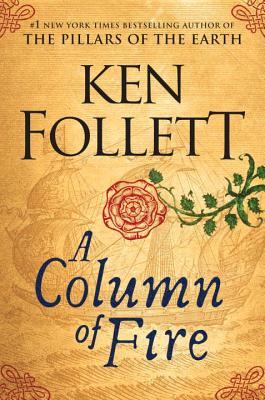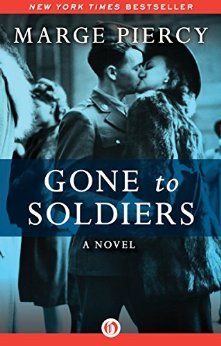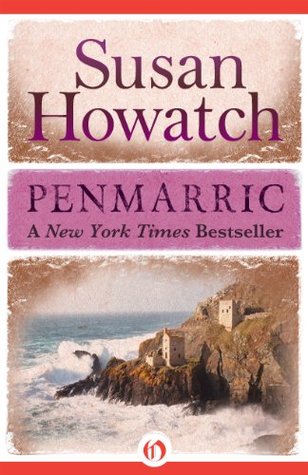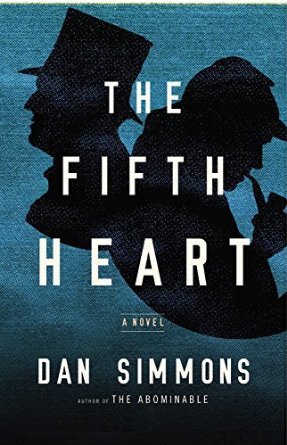It’s been a while since I wrote about my love for Big Books (tomes of 500 or more pages). Here are the five most recent ones I’ve read.
A Column of Fire by Ken Follett, 928 pages

This is the final entry in Ken Follett’s Kingsbridge trilogy. (The first two are Pillars of the Earth, set in the 12th century, and World Without End, set in the 14th century.) This novel begins in the latter part of the 16th century, as young Princess Elizabeth is poised to become queen. One of Follett’s strengths is the creation of strong, well defined fictional characters, and he creates a cast of them here. In their interactions with a few historical personages of the era, these characters live through the religious battles and shifting loyalties of the conflicts between Catholics and Protestants.
I found particularly fascinating Follett’s picture of how the young Queen Elizabeth, facing enmity from most of Europe, created a network of spies and secret agents. This novel covers about a half century but, as in the other two novels in this series, the story never seems to go on too long. Follett is a genius at keeping a large cast of characters interesting while moving through an extended narrative arc.
Gone to Soldiers by Marge Piercy, 703 pages

What a gem of a novel! I discovered it through one of the newsletters of Kindle deals I receive daily.
Piercy uses 10 narrators—four men and six women—to cover the full breadth of World War II and its effects. The characters include soldiers, intelligence officers, code breakers, factory workers, French resistance fighters, and women entering jobs left vacant by the departure of the male work force. As she does in much of her work, Piercy here emphasizes the women characters, but her male characters are equally as individualized and important.
Like Ken Follett, Marge Piercy keeps a large cast of characters moving coherently over the wide sections of time and place necessary to encompass the vastness of an entire world at war. This is a novel that at some time in the future will appear on a list of Big Books that I’ve reread.
Penmarric by Susan Howatch, 704 pages

Penmarric is the only reread on this list. I think I originally read it about 35 years ago (it was first published in 1971), so I’d had enough time to forget the details and therefore relished the chance to reread it.
This is one of those big, sprawling family sagas that I enjoy so much when they’re well done. And this one is very well done. Like Marge Piercy and Ken Follett, Susan Howatch keeps a large cast of characters moving across an extended time span.
The novel covers the years 1890–1945 and three generations of the Castallack family. The story focuses on Penmarric, the huge ancestral home on the family estate of Penmar located in Cornwall (the same area where the current PBS drama Poldark is set). The house represents the family fortune and tradition, but it’s actually the Cornwall region that focuses the characters’ desires and keeps them grounded. It’s a big family, with big dreams and aspirations, and Howatch introduces us to these several characters as individuals forced to live out the consequences of a father’s decision and of the social conventions of an era.
The Fifth Heart by Dan Simmons, 624 pages

The introverted, learned, meticulous novelist Henry James meets the dashing fictional detective Sherlock Holmes. What’s not to like?
At the heart of the novel lies a philosophical conundrum. Holmes is in the midst of his hiatus after the incident at Reichenbach Falls, when he was supposedly killed by his archenemy, Moriarty. Holmes has faked his own death and disappeared because his powers of ratiocination have suggested to him that he is a fictional character. While Holmes ponders his own existence, James is left to think about how own question: If Holmes is fictional, what does that make the novelist himself?
Despite their existential crises, James and Holmes have work to do: They’ve come to America to solve the mystery of the 1885 death of Clover Adams, wife of Henry Adams, scion of the family that produced two U.S. Presidents. Was Clover Adams’s death the suicide it appeared to be, or does it involve sinister forces and matters of national importance?
Dune by Frank Herbert, 535 pages

My husband, daughter, and sister-in-law all love this novel, but I had put off reading it for 50 years because I don’t like much science fiction. What convinced me to read it, finally, is not the realization that this novel has become a major icon of science fiction literature, but rather our retirement relocation to Tacoma, WA, home town of Frank Herbert. Herbert was influenced to write his masterpiece by the presence for nearly 100 years in Tacoma’s North End, very near to where we now live, of a copper smelting and refining plant. The final incarnation of the company that owned the plant was known as American Smelter and Refining Company (ASARCO). ASARCO closed the plant in 1985 because of a decline in the market for copper and the need for pollution control.
The company that was originally one of Tacoma’s biggest employers was also one of its biggest polluters. Its giant smokestack, built in 1917, dominated the area at 571 feet tall. The smokestack finally became a symbol of environmental pollution, and it was demolished in 1993. The area became a Superfund toxic cleanup site. The soil around where we leave is still being tested for contamination as older property is sold and new building projects started.
This local experience prompted Frank Herbert to write Dune, which many people consider the seminal work of ecological science fiction. I don’t love the book anywhere near as much as my family does, but I am glad I finally read it (if for no other reason than I can now include it in my list of Big Books read).
© 2018 by Mary Daniels Brown

